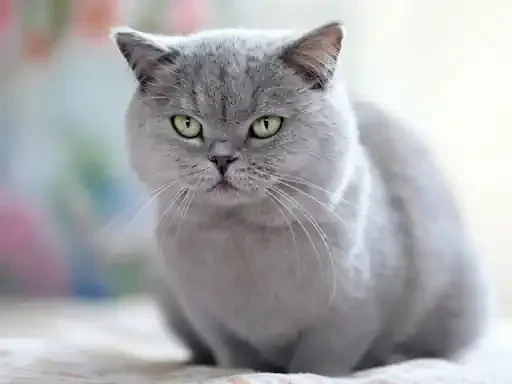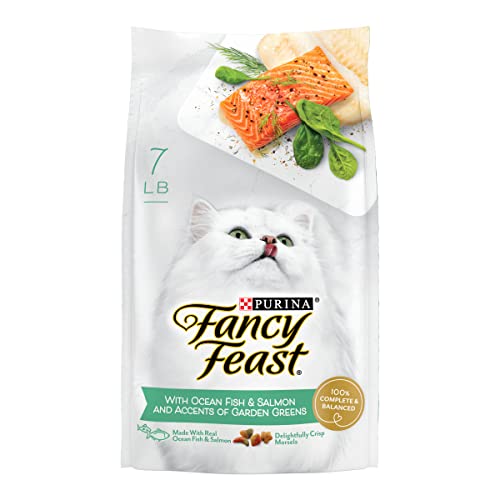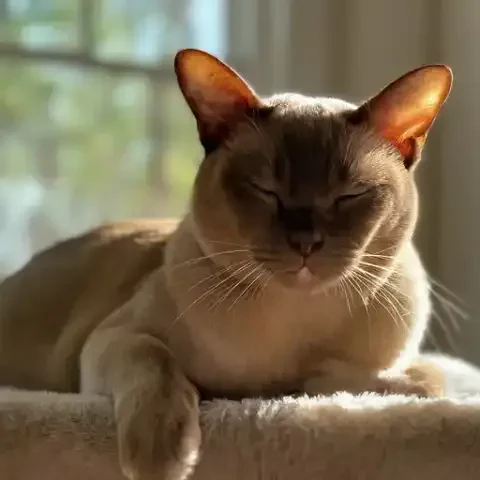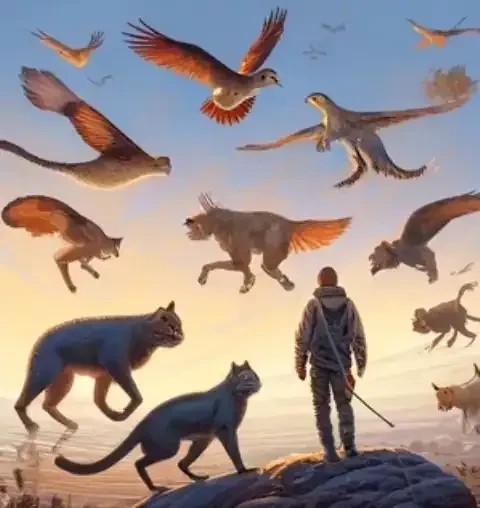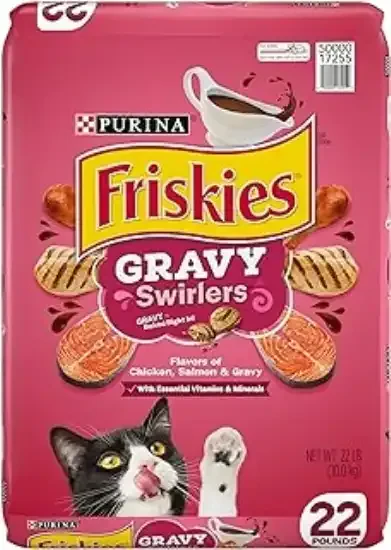Prepare to have your heart melted by a feline that redefines feline proportions and captivates with an undeniable charm. The Munchkin cat, a breed instantly recognizable for its endearingly short legs, stands as a testament to the delightful surprises that nature and selective breeding can create. Imagine a cat that moves with a distinctive, low-to-the-ground gait, a feline seemingly closer to the earth than its long-legged counterparts, yet brimming with the playful spirit and affectionate heart of any beloved domestic cat. This is the Munchkin, a breed that challenges our traditional notions of feline form, inviting us to appreciate the beauty and spirit within a uniquely packaged, petite frame. Their diminutive legs are, without a doubt, their most striking feature, immediately drawing attention and sparking curiosity. But beneath this captivating physical trait lies a "mighty" personality, a spirit that is energetic, playful, and deeply devoted, proving that size truly is no measure of character or companionship. This article is your comprehensive exploration of the Munchkin cat, a journey into understanding the origins, defining characteristics, endearing temperament, specific care considerations, potential health concerns, and ethical considerations surrounding this undeniably unique breed. Whether you're a cat lover intrigued by feline diversity, captivated by unusual breeds, or simply seeking a companion who is as charming in appearance as they are in personality, delving into the world of the Munchkin cat is an enlightening adventure, promising to reveal a breed as captivating in its own way as it is complex in its ethical considerations. Join us as we uncover the story of the Munchkin, exploring the nuances of this "small but mighty" feline companion.
To truly understand the Munchkin cat, one must first address its defining physical trait: those remarkably short legs. Munchkins are definitively characterized as a domestic cat breed distinguished by their significantly shortened limbs. This is not merely a matter of selective breeding for a "compact" look; it is a direct result of a naturally occurring genetic mutation known as achondroplasia, a form of dwarfism. Achondroplasia, in the context of Munchkin cats, specifically affects the development of the long bones in their legs, primarily the femur and tibia. This genetic alteration results in legs that are proportionally much shorter compared to the average domestic cat, while their bodies, heads, and tails remain within the normal size range for domestic felines. It's crucial to differentiate Munchkins from other small cat breeds. Breeds like the Singapura or Cornish Rex are naturally smaller in overall size, but their leg proportions are typical for cats, just on a smaller scale. Munchkins, conversely, possess legs that are disproportionately short relative to their body size, a direct consequence of the achondroplasia gene. Within the Munchkin breed, there is also a spectrum of leg shortness. Breeders often describe variations from "standard" short legs, which are noticeably shorter than average, to even shorter "super short" or sometimes referred to as "rug hugger" varieties. These "rug hugger" Munchkins possess legs that are exceptionally short, giving them an even lower-to-the-ground appearance and gait. It is vital to acknowledge that the Munchkin breed is not without its controversies. While recognized and registered by some cat fancier organizations, notably The International Cat Association (TICA), the Munchkin breed remains unrecognized by other major cat registries, such as The Cat Fanciers' Association (CFA) and the Governing Council of the Cat Fancy (GCCF). This division in recognition stems largely from ethical concerns surrounding the deliberate breeding of a genetic condition, dwarfism, and the potential health implications associated with this trait. Therefore, any exploration of the Munchkin breed must upfront acknowledge and address the ongoing ethical debate and health considerations. While admirers celebrate their unique appearance and playful personalities, critics raise valid concerns about the potential for increased health problems and the ethical implications of breeding for a physical deformity, even if that deformity is perceived as "cute" or "endearing" by some. Understanding this duality is crucial for a balanced and informed appreciation of the Munchkin cat.
The genesis of the Munchkin cat is a fascinating story of spontaneous genetic mutation and human curiosity, a tale that begins not in a laboratory, but in the heart of Louisiana, USA, in 1983. Unlike breeds meticulously crafted over generations, the Munchkin emerged quite serendipitously, as a natural variation within the domestic cat population. The modern breed's acknowledged origin story traces back to Sandra Hochendel of Louisiana and a stray cat she rescued, whom she named Blackberry. Blackberry was no ordinary stray; she possessed strikingly short legs, a trait immediately noticeable and distinctly different from typical domestic cats. Blackberry, despite her short legs, was a capable and fertile cat. She produced litters of kittens, and to Hochendel’s surprise, some of these kittens inherited their mother's distinctive short legs, demonstrating that this unique trait was indeed heritable and could be passed down to subsequent generations. Recognizing the novelty and potential of this naturally occurring short-legged trait, breeders began to selectively breed Blackberry and her short-legged offspring. This marked the intentional development of a new breed, focusing on the propagation and refinement of the short-legged characteristic while maintaining other desirable domestic cat traits. It was during this early development phase that the breed was officially christened "Munchkin," a whimsical name inspired by the diminutive inhabitants of Munchkin Country in L. Frank Baum's classic tale, "The Wizard of Oz." The name perfectly captured the breed's defining feature – their small stature – while adding a touch of playful fantasy. Key early breeders played a crucial role in establishing the Munchkin breed, working diligently to selectively breed for the short legs while also focusing on temperament, health, and overall breed conformation. These breeders were instrumental in advocating for the breed's recognition and establishing a consistent breed standard. A significant milestone in the Munchkin's history was its acceptance by The International Cat Association (TICA) in 1995. TICA, known for its more progressive approach to breed recognition, was the first major registry to officially acknowledge the Munchkin. Following recognition, TICA breeders worked to develop a formal breed standard, outlining the desired physical characteristics, temperament, and overall qualities of the Munchkin cat. This breed standard provided a blueprint for breeders and a guide for judging Munchkins in cat shows, further solidifying the breed's identity. Despite TICA's recognition, the Munchkin breed continues to be a source of ongoing controversy and ethical debate within the broader cat fancy. Many traditional cat registries, and some veterinary organizations, remain opposed to recognizing the Munchkin, citing concerns about the health and welfare implications of breeding for dwarfism. This ongoing debate highlights the complex ethical considerations surrounding the breed, a discussion that continues to this day. Despite the controversies, the Munchkin breed has successfully spread beyond its American origins, gaining popularity in various parts of the world. Their unique appearance and endearing personalities have resonated with cat lovers globally, establishing the Munchkin as a recognized, albeit still debated, breed within the international feline community.
The Munchkin cat's physical characteristics are defined by a striking dichotomy: remarkably short legs juxtaposed against a body of standard domestic cat proportions. This unique combination is the breed's visual hallmark, creating an instantly recognizable and undeniably charming silhouette. The defining feature, of course, is their proportionally shorter legs. These legs are significantly shorter than those of average domestic cats, a trait that is immediately apparent and the breed’s most distinguishing characteristic. However, it’s vital to reiterate that it’s only the legs that are shortened; their overall body size and shape are comparable to other domestic cats of medium build. The shortness of the legs is directly attributed to the skeletal structure, specifically the shortening of the long bones in the legs, namely the femur (upper leg bone) and tibia (lower leg bone). This skeletal alteration is the result of the achondroplasia gene, the genetic foundation of the Munchkin's dwarfism. The reduced leg length has a noticeable impact on their stance and overall height. Munchkins stand lower to the ground than other cats, giving them a distinctive, almost crouching appearance, even when fully upright. Their reduced leg length also means they are generally shorter in overall height compared to standard domestic cats. Breed standards ideally call for legs that are straight, not bowed or excessively curved. While the ideal is straight legs, slight bowing can occur and is sometimes seen within the breed, although extreme bowing is considered undesirable and potentially indicative of skeletal issues. As mentioned earlier, there’s a range of leg shortness within the breed. "Standard" Munchkins possess legs that are noticeably short, but still allow for a reasonable degree of mobility. "Super short" or "rug hugger" Munchkins represent the extreme end of the spectrum, with exceptionally short legs that further accentuate their low-slung profile. Beyond their legs, the rest of the Munchkin's body conforms to a generally medium size and build. Their body is moderately sized, neither overly large nor excessively petite, and their build is typically described as moderate and well-muscled. They possess a rectangular body shape, similar to many domestic shorthair breeds, neither excessively cobby (compact and rounded) nor overly slender and elongated. Despite their short legs, their bone structure is generally solid and well-developed in all areas except the legs. Their bodies, heads, and tails exhibit typical feline bone structure, lending them a sturdy and balanced feel, despite their diminutive leg stature. The Munchkin head is moderately wedge-shaped, presenting a balanced and harmonious form. The wedge shape is gently contoured, lacking sharp angles, resulting in a softly rounded overall head shape. Their head size is proportional to their body, fitting comfortably with their medium build. Ears are medium-sized, pointed at the tips, and set wide apart on the head, contributing to a balanced and alert expression. Eyes are walnut-shaped, moderately large, and also set wide apart, enhancing their open and engaging gaze. Accepted eye colors are varied and often correlate with coat color, ranging from gold to green to blue, depending on the specific coat pattern. The Munchkin tail is medium in length, proportionate to their body, and tapers gracefully to a point, maintaining the overall visual balance of their physique. Their coat is described as short to medium in length, depending on the specific coat variation (some Munchkins may have slightly longer coats than others). The coat texture is dense and plush, offering a soft and resilient feel, contributing to their overall appealing tactile quality. Perhaps mirroring their diverse genetic background, Munchkins can come in an astonishingly wide variety of coat colors and patterns. The short leg gene is inherited independently of coat color genes, meaning Munchkins can exhibit virtually any coat color and pattern found in domestic cats, from solid colors to tabby patterns, pointed patterns, bi-color, and everything in between. This vast array of coat colors and patterns, combined with their unique leg length, ensures that each Munchkin cat is a truly individual and visually distinctive feline.
Living with a Munchkin cat is an experience characterized by playful engagement and affectionate companionship. Despite their diminutive stature, their temperament is anything but small, radiating with a delightful blend of intelligence, curiosity, and a deep-seated love for human interaction. Munchkins are generally known for their playful and energetic personalities. While their short legs might suggest limited mobility, Munchkins are surprisingly agile and active. They enjoy playing, running (albeit closer to the ground!), chasing toys, and engaging in typical feline play behaviors, just adapted to their unique physical form. They are often described as having moderate energy levels, meaning they are playful and active without being excessively demanding or hyperactive. They enjoy both bursts of playful activity and periods of contented cuddling and relaxation. Their intelligence and curiosity are readily apparent. Munchkins are bright cats who enjoy exploring their environment, investigating new objects, and engaging their minds. Puzzle toys are particularly well-suited to their intelligent nature, providing mental stimulation and entertainment. Interactive play sessions that challenge their problem-solving skills are also highly appreciated. Affection and sociability are hallmarks of the Munchkin temperament. They are affectionate cats who thrive on human companionship and attention. They often form strong bonds with their families, enjoying cuddling, lap time, and being involved in household activities. They are people-oriented and generally relish the company of their human companions, often seeking out interaction and affection. Munchkins are also frequently described as outgoing and friendly cats, extending their amicable nature beyond their immediate families. They are often accepting of strangers, adapting relatively well to new people and new environments. This outgoing temperament makes them well-suited to homes with visitors and contributes to their generally adaptable nature. Their social nature often extends to other pets as well. Munchkins generally get along well with children, other cats, and even cat-friendly dogs, particularly when properly socialized from a young age. Their adaptable and tolerant personalities contribute to harmonious multi-pet households. Anecdotally, some Munchkin owners report a quirky and endearing trait: a "magpie" tendency, or a propensity to collect and hoard shiny objects or small toys. While not universally present in all Munchkins, this playful hoarding behavior adds another layer of charm to their already engaging personalities. Munchkins are generally adaptable cats, adjusting well to various living situations, from apartments to spacious houses. As long as their needs for interaction, play, and enrichment are met, they can thrive in diverse environments. While they may not be able to jump as high as other cats, they adapt readily to their physical limitations and find creative ways to navigate their surroundings and engage in typical feline behaviors. Vocalization in Munchkins is typically described as being moderate and pleasant. They are not known for being overly vocal cats, but they are communicative and will use soft meows and chirps to interact with their humans and express their needs. Their vocalizations are generally gentle and unobtrusive, adding to their overall harmonious presence within the home. In summary, the Munchkin temperament is a delightful blend of playfulness, intelligence, affection, and sociability. They are engaging and devoted companions who, despite their small legs, possess a "mighty" personality, offering a unique and rewarding feline partnership.
Caring for a Munchkin cat is, in many respects, similar to caring for any domestic shorthair cat. Their grooming needs are relatively minimal, and their dietary and exercise requirements align with general feline guidelines. However, there are a few adaptations and considerations to keep in mind, primarily related to their unique physical build. Grooming an Ocicat is straightforward due to their short to medium coat. Weekly brushing with a soft-bristled brush or grooming mitt is generally sufficient to remove loose hair, prevent mats (though matting is less common with their coat type), and maintain a healthy, glossy coat. Bathing is usually only necessary on an occasional basis, if they become particularly dirty or for specific hygiene reasons. Routine nail trimming, every few weeks, and regular ear cleaning, as needed, are essential hygiene practices for all cats and apply equally to Munchkins. Dental care should also be a consistent part of their routine, with regular tooth brushing and veterinary dental checkups being important for preventing dental disease. Feeding a Munchkin requires attention to diet and portion control, as with any cat. A balanced, high-quality cat food, appropriate for their age, activity level, and any specific health needs, is crucial. Given the potential for joint issues associated with their dwarfism, weight management is particularly important for Munchkins. Excess weight can put additional strain on their joints, exacerbating any pre-existing predispositions to arthritis or joint problems. Therefore, careful portion control and preventing obesity are essential. Always ensure they have access to fresh, clean water to maintain hydration and support overall health. Exercise and enrichment are vital for Munchkins, just as they are for any active and intelligent cat breed. Despite their short legs, Munchkins still require and enjoy daily playtime for both physical and mental stimulation. Adapt playtime activities to their physical abilities. While they may not jump as high as other cats, they can still run, chase, pounce (at a lower level!), and engage in interactive play. Focus on floor-based play, using toys that encourage running, chasing, and pouncing at ground level or with low jumps. Puzzle toys and interactive feeders are excellent for engaging their intelligence and providing mental stimulation. Scratching posts and cat trees are still important for Munchkins to fulfill their natural scratching and climbing instincts. However, consider providing lower or ramped scratching posts and cat trees to make them more easily accessible, given their limited jumping ability. Munchkins are best suited to primarily indoor lifestyles. Keeping them indoors protects them from traffic hazards and other outdoor dangers, and allows you to better manage their environment, particularly in relation to their potential mobility limitations. While they may enjoy supervised outdoor access in a secure, enclosed area, their short legs might make them more vulnerable to certain outdoor hazards. Litter box access should be carefully considered, especially as Munchkins age or if they develop any joint issues. Ensure their litter boxes are easily accessible, preferably with low sides, making it easy for them to enter and exit without putting undue strain on their joints. Providing these adapted aspects of care, particularly focusing on weight management, appropriate exercise, and accessible environment, will contribute significantly to the health, comfort, and longevity of your Munchkin cat.
Health considerations are paramount when discussing the Munchkin breed. It's essential to approach this topic with transparency and a focus on responsible breeding and informed ownership. The ethical debate surrounding breeding for dwarfism in animals is a significant consideration. Critics argue that deliberately breeding for a genetic mutation that causes skeletal deformity raises ethical questions about prioritizing human aesthetics over animal welfare. They express concern that breeding for dwarfism may predispose cats to various health problems and compromise their overall quality of life. While Munchkins are generally described as playful and active, it is crucial to acknowledge the potential health issues that may be associated with achondroplasia, the dwarfism that defines the breed. Arthritis and osteoarthritis are perhaps the most significant long-term health concerns for Munchkins. The altered joint structure and biomechanics resulting from their short legs may increase their susceptibility to developing arthritis, particularly as they age. The joints in their legs may be under increased stress due to their unique conformation, potentially leading to earlier onset or more severe arthritis. Lordosis, or swayback, is another spinal condition that has been mentioned as a potential concern in Munchkins. Lordosis is characterized by an abnormal curvature of the spine, dipping downwards in the back. While the prevalence in Munchkins is debated, it is a potential skeletal issue to be aware of. Pectus excavatum, also known as sunken chest, is a chest wall deformity where the sternum and rib cage grow abnormally, creating a sunken appearance in the chest. This condition has also been reported in Munchkins, although again, prevalence is not definitively established. There is also some suggestion, though less definitively proven for Munchkins compared to some dwarf dog breeds, that dwarfism could potentially increase risks during pregnancy and kittening for female Munchkins. Given these potential health concerns, responsible breeding practices are absolutely crucial for Munchkin cats. Reputable breeders prioritize health and strive to minimize potential health risks through careful selection of breeding stock and health testing. Genetic screening for conditions common in cats in general, such as Pyruvate Kinase Deficiency (PKDef), Progressive Retinal Atrophy (PRA), and Hypertrophic Cardiomyopathy (HCM), is essential, even if these conditions are not directly linked to dwarfism itself. Responsible breeders also carefully select breeding cats for straight legs, good overall conformation, and documented health histories, aiming to minimize the potential for skeletal problems associated with dwarfism. Transparency from breeders is paramount. Potential owners should seek out breeders who are open and honest about health testing, lineage, and the potential health challenges associated with the breed. Regular veterinary care is even more crucial for Munchkin cats than for some other breeds. Regular veterinary checkups, ideally twice yearly, are essential for early detection and proactive management of any health issues, particularly those related to joint health. Veterinarians can monitor for early signs of arthritis or other skeletal problems and recommend preventative or management strategies. While generalizations can be misleading, it is important to acknowledge that the average lifespan of Munchkin cats may be slightly shorter than some other domestic breeds, potentially due to the health considerations associated with their dwarfism. However, with responsible breeding, proactive care, and attentive owners, many Munchkins can still live long and fulfilling lives. Prospective owners must be prepared for the possibility of higher veterinary costs over the cat’s lifetime due to the potential for breed-related health issues and should carefully consider pet insurance to help manage these potential expenses. Ultimately, understanding the potential health considerations and ethical debates surrounding the Munchkin breed is crucial for responsible and informed ownership.
Is a Munchkin cat the right feline companion for you? This is a question that demands thoughtful consideration, balancing the undeniable charm of their unique appearance with the ethical and practical realities of owning a dwarf breed. The allure of the Munchkin's short-legged appearance is undeniable. Their diminutive stature and distinctive gait are undeniably endearing and are often the primary reason people are drawn to this breed. However, it is essential to move beyond the "cute factor" and engage in a serious evaluation of the ethical implications and potential health concerns associated with the breed. Before making the decision to bring a Munchkin into your life, carefully consider the ethical debate surrounding breeding for dwarfism. Reflect on whether you are comfortable supporting the deliberate propagation of a genetic condition that may predispose cats to health problems, even if those problems are not guaranteed to occur. Munchkins are best suited to homes that can provide ample attention, playtime, and a safe, indoor environment. They thrive on interaction and companionship and need owners who are willing to dedicate time to engage with them daily. Owners should also be prepared to adapt their play and home environment to accommodate the Munchkin’s lower-to-the-ground stature. The time commitment for a Munchkin is comparable to that of any cat, with the added potential need for closer monitoring of their joint health as they age. While their grooming needs are relatively low, their need for interaction and attention is high. Financially, potential Munchkin owners should be prepared for the possibility of higher veterinary costs compared to some other breeds. The potential for breed-related health issues, particularly arthritis, may necessitate more frequent vet visits, diagnostic testing, and long-term management of chronic conditions. Consider pet insurance to help mitigate these potential financial burdens. Ethical sourcing is paramount if you decide to acquire a Munchkin. Avoid supporting puppy mills, pet stores, or unethical breeders who prioritize profit over animal welfare. Instead, seek out reputable breeders who are transparent about health testing and ethical breeding practices, or seriously consider adoption as a more ethically responsible alternative. Adopting a Munchkin mix or a cat with similar needs from a shelter or rescue organization not only provides a loving home to a deserving animal but also avoids directly contributing to the demand for intentionally bred dwarf cats. Ultimately, deciding if a Munchkin is right for you is a deeply personal decision. It requires a careful balancing act: appreciating their unique charm while honestly confronting the ethical and health considerations. Choose with both your heart and your head, ensuring that your desire for a Munchkin is rooted in a commitment to responsible ownership and a willingness to provide the best possible life for this small but mighty feline companion, addressing their unique needs and potential health challenges with open eyes and a generous heart.
If, after thoughtful deliberation, you decide that you are prepared and ethically comfortable with welcoming a Munchkin cat into your life, the next crucial step is to find one through responsible and ethical channels. Ethical sourcing is absolutely paramount when seeking a Munchkin, given the breed's inherent ethical considerations. If you choose to go the breeder route, finding a truly reputable breeder is essential. Avoid puppy mills, pet stores, and backyard breeders at all costs. These sources often prioritize profit over animal welfare and are unlikely to conduct appropriate health testing or prioritize ethical breeding practices. Seek out breeders who are transparent, knowledgeable, and genuinely care about the health and well-being of their cats. Reputable breeders will be happy to answer your questions in detail, provide documentation of health testing for conditions like PKDef, PRA, and HCM, and be open about the lineage and health history of their cats. Ask specific questions about their breeding practices, their approach to minimizing potential skeletal issues like lordosis and pectus excavatum, and what health guarantees they offer for their kittens. Visiting the cattery to observe the living conditions of the cats, meet the kitten's parents (if possible), and assess the overall health and temperament of the cats firsthand is highly recommended. Pay close attention to the overall health and condition of the cats in the cattery, ensuring they are living in clean, spacious, and enriching environments. As an ethically commendable alternative to purchasing from a breeder, strongly consider adoption. Shelters and rescue organizations often have a variety of cats in need of loving homes, and occasionally, Munchkin mixes or cats with short legs may find their way into rescue situations. Check with your local animal shelters and humane societies, as well as breed-specific or general cat rescue organizations, and online adoption platforms to search for Munchkins or similar cats in need of homes. While dedicated Munchkin rescues are less common, general cat rescues may sometimes have cats with Munchkin traits, or simply cats who would benefit from a loving home and deserve a chance, regardless of breed. Be open to the possibility of adopting a Munchkin mix or a cat with short legs, rather than focusing solely on a purebred Munchkin. Consider that some Munchkins in rescue may have pre-existing health conditions, potentially making them "special needs" adoptions. Be prepared to provide extra care and attention if adopting a cat with known health challenges. The cost of a Munchkin kitten from a breeder can be substantial, often reflecting the perceived rarity and demand for the breed. Prices can range from $1000 to $3000 or even higher, depending on lineage, breeder reputation, and perceived "quality" of the kitten. Adoption fees from shelters and rescues are typically significantly lower, often ranging from $50 to $200, making adoption a more affordable option. However, price should never be the primary factor when choosing a pet, especially with a breed like the Munchkin where ethical sourcing and health considerations are paramount. Focus on finding a healthy, well-socialized cat from a responsible source, whether that is a reputable breeder or a rescue organization, prioritizing ethical considerations and the cat's well-being above all else.
In conclusion, the Munchkin cat, with its undeniably endearing short legs and spirited personality, offers a truly unique feline companionship experience. They are cats that capture hearts with their diminutive stature, charm with their playful antics, and endear with their affectionate nature, proving that "small" in size does not equate to small in personality or heart.
